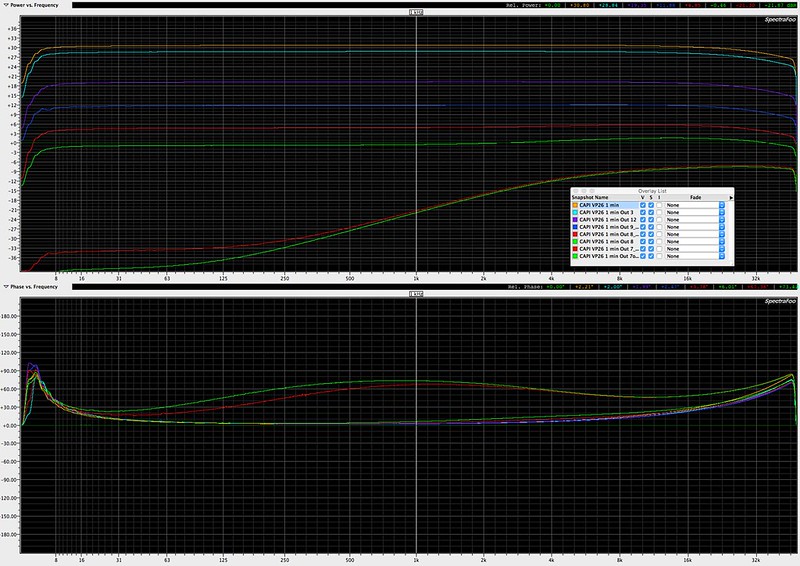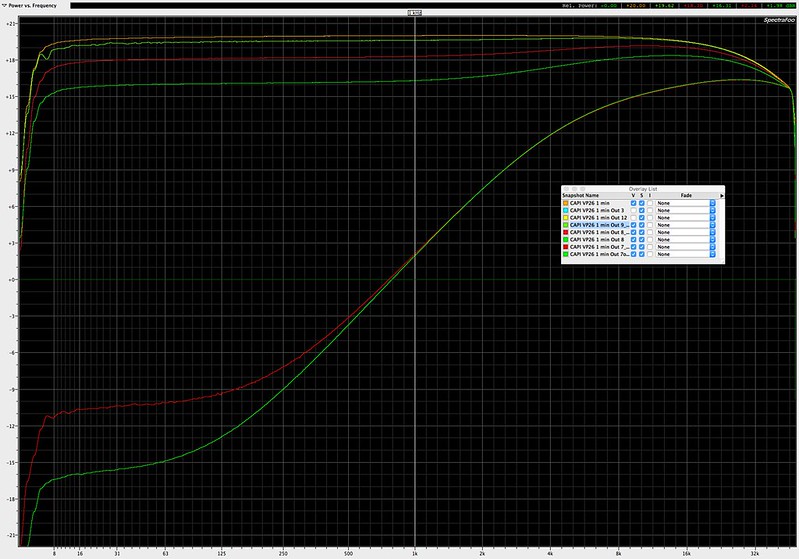I notice these high attenuation changes in T attenuator response, and I'd guess most people don't ever look at response plots to know it can be of concern. These examples are the standard modern 'not quite' a proper 'T' attenuator (because they don't go open and have a minimum loss, rather than 0dB minimum loss) as sold by CAPI, Hairball, and others, and the basic concern is to be noted with all vintage ones as well.
It's usually not a problem because we don't usually operate in these high attenuation zones, but I will say I see it in this range with vintage limiters like the Gates SA-39 and any others with T's or ladders on the input that run with high attenuation from modern signal levels. An additional front end pad to change the range can be beneficial.
This example is a popular transformer coupled preamp with ‘T’ on the output after the transformer, but it's not specific to that particular amp. The knob runs the typical 7 o'clock to 5 o'clock range.
9 o'clock. 0.2dB treble boost. This is the beginning of frequency deviation. -19dB @ 1kHz.
8:30 o'clock. 0.8 dB treble boost. -26dB @ 1kHz.
8 o'clock. 2.3dB treble boost. -31dB @ 1kHz.
7:30 o'clock. Middle of phase starts to blow out. 26dB shelf boost difference from 30Hz to 20kHz.
7 o'clock (off). Middle of phase blows out further. 27dB shelf boost difference from 30Hz to 20kHz.
This may speak a bit to unintended results from people using the output pad rather than the input pad, outside of distortion changes.
First we have the attenuation amounts separated by gain:
full size pic HERE

Then we have gain matched to show the equalization changes:
full size pic HERE

It's usually not a problem because we don't usually operate in these high attenuation zones, but I will say I see it in this range with vintage limiters like the Gates SA-39 and any others with T's or ladders on the input that run with high attenuation from modern signal levels. An additional front end pad to change the range can be beneficial.
This example is a popular transformer coupled preamp with ‘T’ on the output after the transformer, but it's not specific to that particular amp. The knob runs the typical 7 o'clock to 5 o'clock range.
9 o'clock. 0.2dB treble boost. This is the beginning of frequency deviation. -19dB @ 1kHz.
8:30 o'clock. 0.8 dB treble boost. -26dB @ 1kHz.
8 o'clock. 2.3dB treble boost. -31dB @ 1kHz.
7:30 o'clock. Middle of phase starts to blow out. 26dB shelf boost difference from 30Hz to 20kHz.
7 o'clock (off). Middle of phase blows out further. 27dB shelf boost difference from 30Hz to 20kHz.
This may speak a bit to unintended results from people using the output pad rather than the input pad, outside of distortion changes.
First we have the attenuation amounts separated by gain:
full size pic HERE

Then we have gain matched to show the equalization changes:
full size pic HERE




